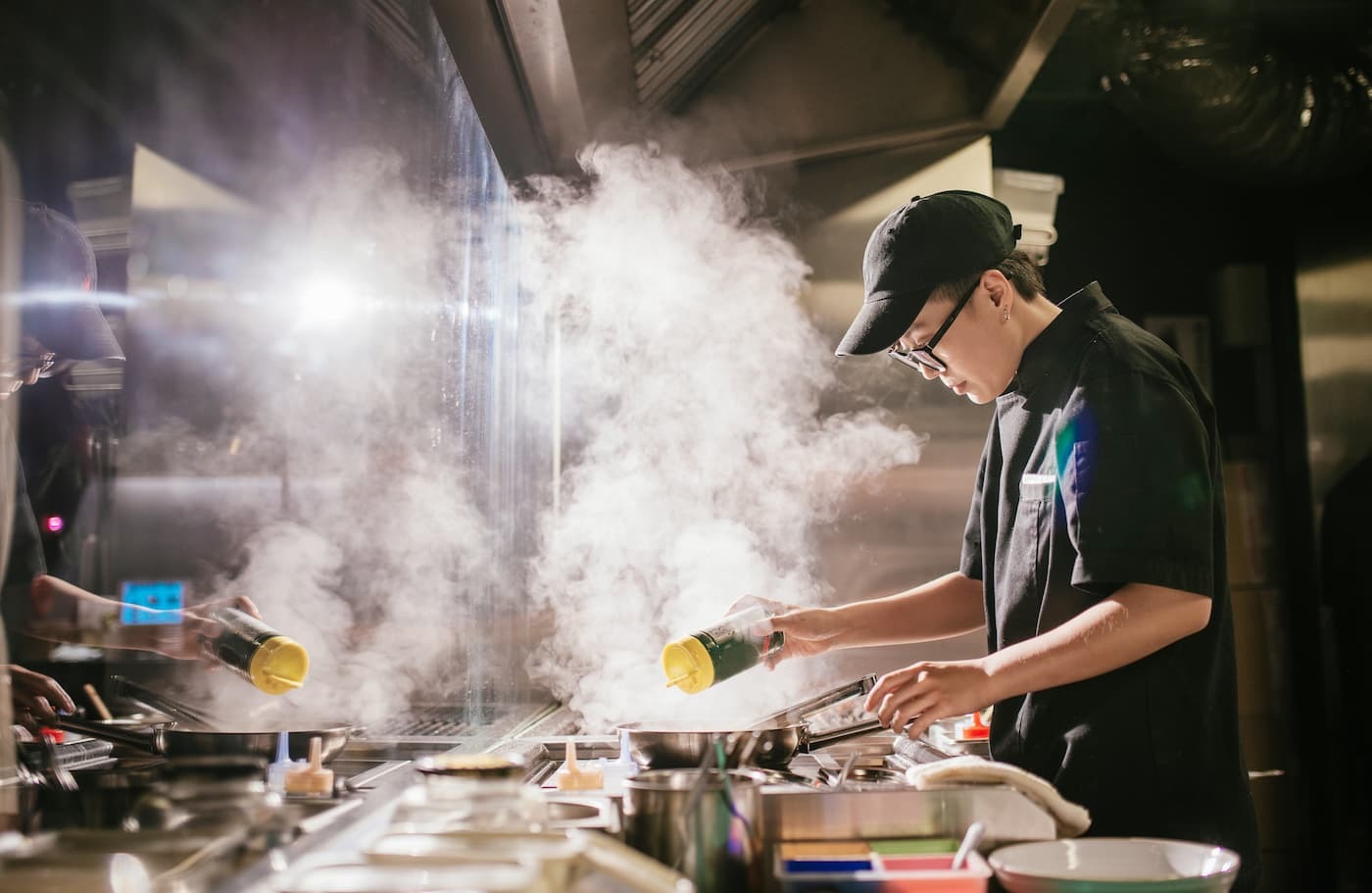How to design a restaurant recipe card–and share it
Editorial Team
6 min read
Your restaurant’s secret ingredient may be in the sauce–but it should also be on a recipe card. While recipe cards may remind you of your grandmother’s handwritten 3” by 5” note cards, restaurant recipes are the backbone of every eatery–from Michelin-starred establishments to cozy neighborhood pubs–and help them replicate the dishes that keep customers coming back.
Since restaurant staff typically can’t afford the time and effort to dig through a recipe box during the evening rush, the design and storage of your recipe cards is critical to running an efficient kitchen.
Read on to learn about how to create recipe card templates that maximize both employee efficiency and customer satisfaction. In fact, we’ll tell you why sharing your secret sauce can even be a key to customer loyalty.
A brief history of recipe cards
It’s not an exaggeration to say that recipe cards were at the birthplace of Western civilization. They can be traced all the way back to Ancient Greece and Rome. Turns out, recipes for pancakes are timeless.
In fact, early recipes can be found the world over. India documented recipes for health and wellness in the 6th century, and the world’s first written treatise on tea cultivation and preparation was published in China in the 8th century.
Initially, most written recipes were simply meant to jog the memory. Then, for hundreds of years people passed down recipes to younger generations primarily by way of example. Over the last couple of centuries that pattern changed–first with the spread of literacy and then with the scientific revolution in the 20th century. It was American women who strove to achieve more precision in the kitchen. By the mid-20th century, subscription magazines started printing recipe cards on heavy stock, and women began sharing and trading recipes as a form of social record-keeping, preserving the traditions of making and enjoying beloved recipes.
Why you should have restaurant recipe cards
Today, recipe cards are more useful than ever, thanks to their scientific-level precision and repeatability. Here are some top reasons you should have recipe cards for your restaurant:
- To maintain quality and consistency: Even the most seasoned chef needs a reference every now and then. Recipe cards act as quality assurance guides, enabling kitchen staff to maintain the integrity of each dish. Whether it’s a signature entrée or a specialty dessert, adhering to a standardized recipe helps ensure that every customer experiences the same delightful flavors with each visit.
- To serve as training: Using detailed recipe cards help new hires avoid making errors and gain confidence more quickly.
- To help control cost: By precisely documenting ingredient quantities, recipe cards can help minimize food waste–and as a result, optimize profitability.
- For menu development: Wanting to spice up your offerings? Recipe cards can help facilitate menu development and refinement by capturing ingredients and techniques as you experiment with new recipes to integrate into your collection.
How to create recipe cards and templates
Recipe card design should prioritize clarity, functionality, and an on-brand aesthetic. Start by choosing a recipe card format that’s clear and concise with a readable font. At minimum, information should include a list of ingredients, cooking/baking instructions, and plating notes. But, you may also want to include auxiliary information like allergens/substitutions, prep time, storage notes, and drink pairings. Whatever information you choose to include, organize it logically in distinct sections. Bullet points or numbered lists can help enhance comprehension.
Leave ample space for chefs to add their own notes or modifications to the recipe. This encourages creativity and adaptation, while maintaining the core essence of the dish. At the same time, always ensure consistency by utilizing standardized units and measurements throughout.
Finally, think about adding in vivid visuals and on-brand elements. Tantalizing images of the finished dish are always a good idea. And, think about how you can incorporate subtle branding elements like the restaurant logo, color scheme, or tagline.
You may also opt to create binders and/or digital recipe cards depending on what works best for you. While recipe cards are mostly for the benefit of the kitchen, check out the next section for some ideas about using them for marketing.
Leverage your recipe cards for marketing
You know your dishes are good when customers start asking for the recipe. But chefs never share their secrets, right? Not necessarily.
Recipes have a long history of bringing people together–whether to celebrate a shared cultural history, a family tradition, or just enjoy the experience of eating good food with good friends. Sharing recipes with your guests can capitalize on that effect, making them feel valued and reminding them how much they love your food.
While there are plenty of ways to harness a good restaurant recipe for marketing, here are just a few, for starters.
- As a reward–If you’ve set up a loyalty and rewards program for your regulars, you could send recipe cards out as rewards for repeat visits.
- As a gift–Whether it’s for a special event, a holiday, or just a thank-you-for-being-our-guest occasion, a recipe or ingredient card can make a thoughtful gift for your guests.
- As a birthday card–If you track your customers’ birthdays with a tool like Clover Customer Engagement, you can send out a physical recipe card or a digital gift card as a gift. What’s more, it may incentivize them to celebrate their birthday at your eatery.
- As an invitation–What better way to let your community know about events at your establishment, special pricing, or other announcements and entice them to visit than with a physical or digital recipe card.
- As a social post–Posting digital recipe cards to your social media can lend to brand exposure through views and shares. If you’re worried that you’ll lose customers because they’ll make the recipe at home, chances are they won’t actually go to all the trouble of sourcing ingredients, buying them, and putting in the time–especially when they know they can get it expertly made from you.
Clover offers a wide range of restaurant POS solutions to help restaurants of all sizes manage operations. Contact a Clover Business Consultant to learn more. And, be sure to check out the Clover App Market for apps to help you create and manage your recipe cards.
Related Posts
4 reasons restaurants should try the new Clover Online Ordering with Delivery
10 free & easy ways to drive traffic to your website
Popular Topics
Stay In Touch
Sign up and learn more about Clover.
Thank you for your subscription!
Recent Stories
- Jewelry store supplies and equipment needed for opening day
- How small businesses can use employee discounts to retain staff
- Tips and tricks for opening an outdoor pop-up restaurant
Please share your contact information
to access our premium content.
Thank you for sharing your contact information.
Download Now





